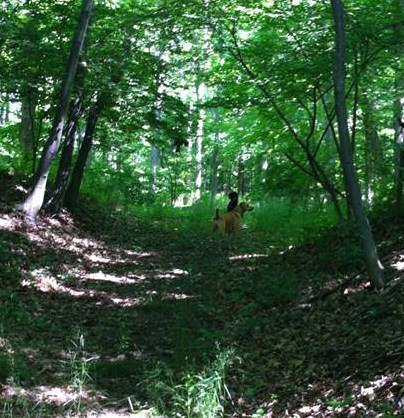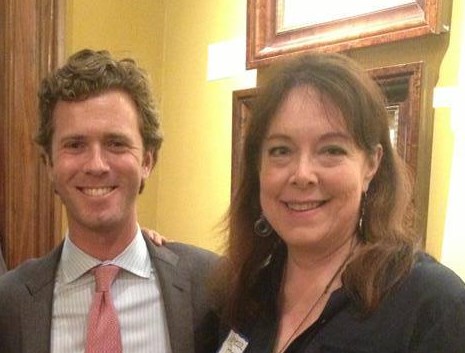The purge I discussed in ontological detail awhile back? Well, it came to fruition with the Epic Tag Sale.
After an ignominious semi-rain out on Saturday and Sunday, Monday dawned beautifully and full of promise. It took me 2 ½ hours to get everything out and set up, but by nine I was (almost) ready for the first customers who began wandering by. The town I live in has a Memorial Day parade every year. Even though it no longer goes past my house (more’s the pity), I knew there would be some significant traffic through town as people parked and walked to prime viewing real estate.
So this blog is about some of the wonderful people who stopped to buy, or just to look, or just to talk. Or a combination of the three.
Deirdre was my first customer. A tall, soft-spoken woman of about 65 or 70 who speaks with a German accent and walks with a cane, Deirdre came before I was done putting everything out. She meticulously examined every item I put on display, some seemingly insignificant and yet oddly specific. A never-before-opened oral hygiene tool, price still affixed, being sold at a 500% reduction. She bought that – clever shopper. Picture frames. Just a few. Small ones. A basket. She looked at all 10 of the baskets on display and selected one she said was “just the right size.” Deirdre lives across the street, she told me. I had not seen her before, a fact that bothered me more and more as we talked. Why had I not noticed her? Where she lives is a big house divided into apartments, and she has the one in back on the first floor, she explained. When she talked, she looked right into my eyes. She thought about what she wanted to say and often paused for a long time between words. This is a quality I admire. I don’t have it.
Deirdre bought about $6.00 worth of wares and said she would come back. She did. The second time she collected some more, carefully selected items. She looked at a clock radio and asked, “Can I just use this as a radio? You know, for some music around?” I ended up throwing that in for free. “You are my best customer,” I told her. “Repeat business is worth something.”
She returned three times, and on the third visit, she asked about a man’s suede jacket hanging on a ladder in the driveway. Someone had just looked at it a few minutes before and rejected it for a tiny hole the size of a pin head on one sleeve. I told Deirdre I would reduce the price from $10.00 to $7.00. She tried it on. Her face lit up. “It fits perfectly,” she said, grinning.
I knew, because of where she lives, because of how carefully she shopped, that Deirdre is alone, lives on a fixed, very low income, and that she is lonely, smart, a lovely person. Okay, I did not know all that because of where she lives or how she shopped, but I knew it. Each time she walked across the street to me, I greeted her warmly by name. I wanted her to know she was a person to me. That I had seen her. Finally.
After her last purchase, she went home to put it away and returned one more time. She told me she was going to the church thrift shop down the street. I said, “Well thank you for shopping here first!” She explained that she was not going there to shop, but to work. As a volunteer, helping the women sort, sell, organize, display. Deirdre explained, “I see things as they come in and sometimes get some great stuff!”
After 25 years in this town, I have not once stepped into that thrift store. Frugal shopper that I am, this fact speaks volumes. Deirdre shopped at my tag sale because she a. has no car and b. can’t afford to go to Walmart or Macy’s or Sears. Deirdre is in danger of becoming invisible. I don’t want that to happen.
Another lady who touched my heart was a young Latino mother who walked by with her three daughters. She approached my tables in the warmest part of the day. The sun was high and the maples in my front yard made gently moving patterns across her face. As she looked at clothes, her three exquisite children ages 4, 6 and 8, examined the stuffed animals in a big box, the art supplies, the bright red binoculars my son used to take when we’d go on hikes.
The lovely young mother did not speak much. Her children occasionally spoke to her, very softly. I helped the girl with the binoculars figure out which end to look through. Her sister crouched down to look at sheets of stickers in a box mainly filled with markers. She examined a stack of size 6 shorts with care and picked out a pair for $2.00. Her daughters did not beg; they did not fuss; they did not pull on her arm. They smiled up at me, waited patiently, respectfully handled things and put them back where they had been.
Mama examined the contents of her purse. She did calculations. She looked at the price on the binoculars. $5.00. “You can have that for $3.00,” I said, knowing she would not ask. She raised one eyebrow and tucked it into her arm where a pink Yankee’s hat (50¢) and the shorts already were. Her middle daughter had never left the box of like-new stuffed animals. When she saw her mother was wrapping things up, she pulled away from the box with intense will power. As she neared us, her mother looked down at her with the affectionate understanding of all mothers. She took the child’s hand and walked with her back to the box. The little girl pulled out a horse, legs dangling adorably. I chimed in: “All stuffed animals are $2.00.” Mama must have said something, because they came back to me, horse still clutched in the little girl’s hand. I totaled up their merchandise –$7.50 for shorts, hat, binoculars and horse.
Meanwhile, the oldest girl was without a purchase. She was still looking at the stickers. I said, “Can you hand me that box?” She picked up the Rubbermaid bin full of markers and stickers and handed it to me. I put the lid on and handed it back to her. “On the house.” Four black haired beauties walked back down the street, so quiet, so careful, and so satisfied.
A red mini-van pulled up to the curb and started to discharge passengers. A boy around 12, a mom, a dad, and three mentally handicapped adults, two women and a man. I quickly came to realize that they all lived together in the family’s home, which doubled as a supervised living situation for the three residents.
Like machines, the parents started to look through the offerings. Meanwhile, their son homed in on two ten pound weights selling for $5.00. I later found out that he is small for his age, and not 12 at all but 15 and in high school. He clearly has aspirations to bulk up and these barbells are going to be part of that plan.
The three residents look around too. Well, not the man. He stood apart, arms crossed over his chest, a smile fixed to his face. He seemed uninterested in shopping, but wanted to ask me questions. Do I live here? Alone? Do I have kids? Do I have dogs? Do I have cats? Is there a garden? “David always wants to know everything,” the mother explained, as she picked up a ski helmet and asked, “I wonder if we could use this for a bike helmet?”
Meanwhile, she had dispatched her husband to run home for money. As she found things she wanted – two hand-soap dispensers, a teapot, a framed print – she handed them to me to hold onto. A pile grew on the chair I brought out to sit on but never had a chance to sit on.
One of the disabled adult women had a very hard time articulating. Her speech was tough to understand but she did a wonderful job conveying meaning with her mobile face. She selected some lapis earrings, “For mah maw.” I confirmed: “A gift for your mother?” She nodded, looking directly into my eyes.
The house mother, moving efficiently and with tremendous focus, rifled through the clothes hanging on a line strung across the yard. She plucked out a pair of black and white capris and told the woman who wanted the earrings, “If these don’t fit me, they’re yours. How’s that?”
The smiling gentleman asked, “How long have you lived here?” For the past five minutes, the other woman had been clipping hair clips from a basket into her very short hair. She also kept picking up a reversible hand mirror and looking at herself in it, first on one side, then on the other, magnifying, side. She returned to it again and again.
All of my men’s clothing was sold except for one very nice collared Dean Martin style shirt (I don’t know how else to explain it). The boy, the one who wants to grow, tried it on over his tee shirt. “How do I look?” he asked all of us. The boy paused, awaiting his mother’s brisk approval. It goes on the chair, too.
They continued to shop till dad returned, at which point I bagged up their purchases (two paper shopping bags full), and gave them the total: “$31.00.” Suddenly dad looked at a wooden jewelry box, the one holding the remnants of the jewelry for sale. “Is this for sale?” I tell him it is, for $1.00. It was pretty beat up. He counted out dimes and quarters for this final purchase, and corrals his troops.
Just before she climbed into the car, the woman drawn to the mirror returned and picked it up off the table. “I will pay for this with my own money.” I held out my hand saying something encouraging. She gave me a dollar. “This,” she said, to be sure I understood, “is my own money.”
There were many more. The woman, visiting a friend for the weekend, whose eyes lit up when she noticed my goddess necklace. “There are more of us goddess worshippers around than you would think,” she confided. The independent but slightly slow young man who bought two men’s shirts, asking first to be sure, “These are for fall or winter, right?” A young girl and her boyfriend who stopped by and bought only three things. Three impractical things. An earth friendly bumper sticker, and two buttons, one of which clearly states that no apologies will be offered for sarcasm.
The people who stopped by my sale moved me and delighted me. Some wanted to share their stories. Others quietly shopped, paid and slipped away. The beds went. The table. At least 30 stuffed animals, released by my daughter at long last. Into other lives to enrich or satisfy or fill a hole or become a gift. And I am the lighter for it.














